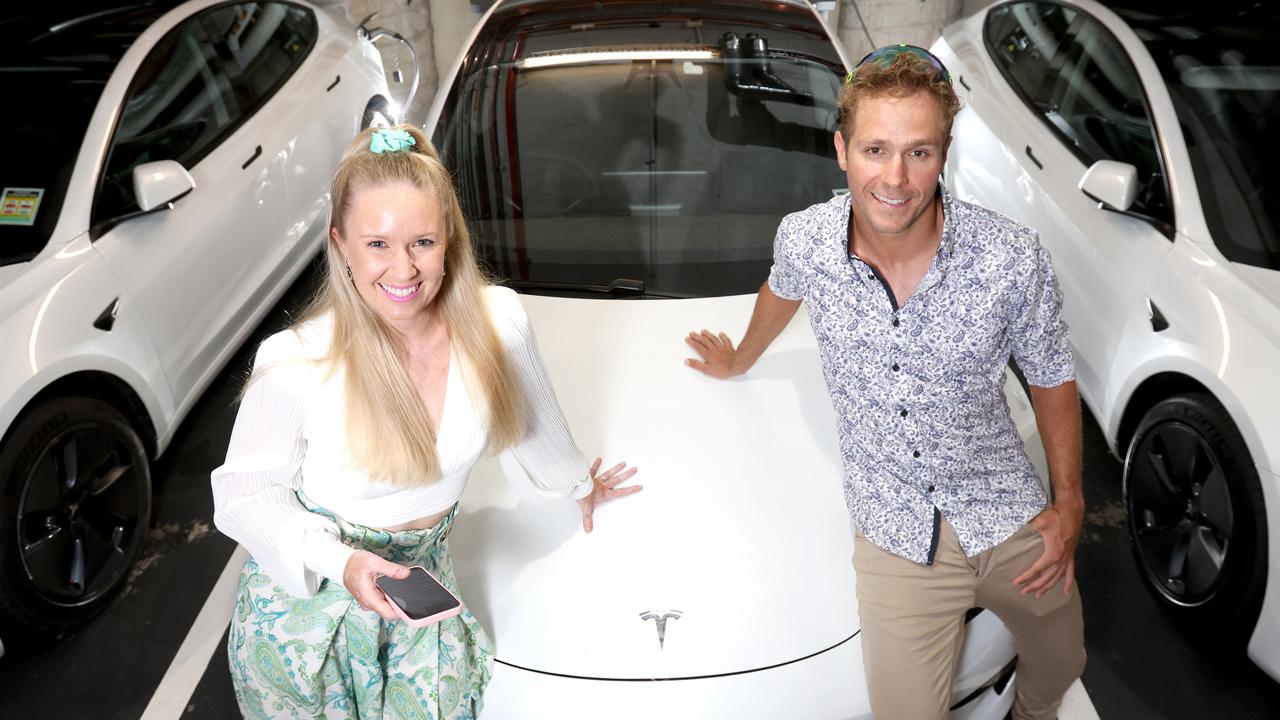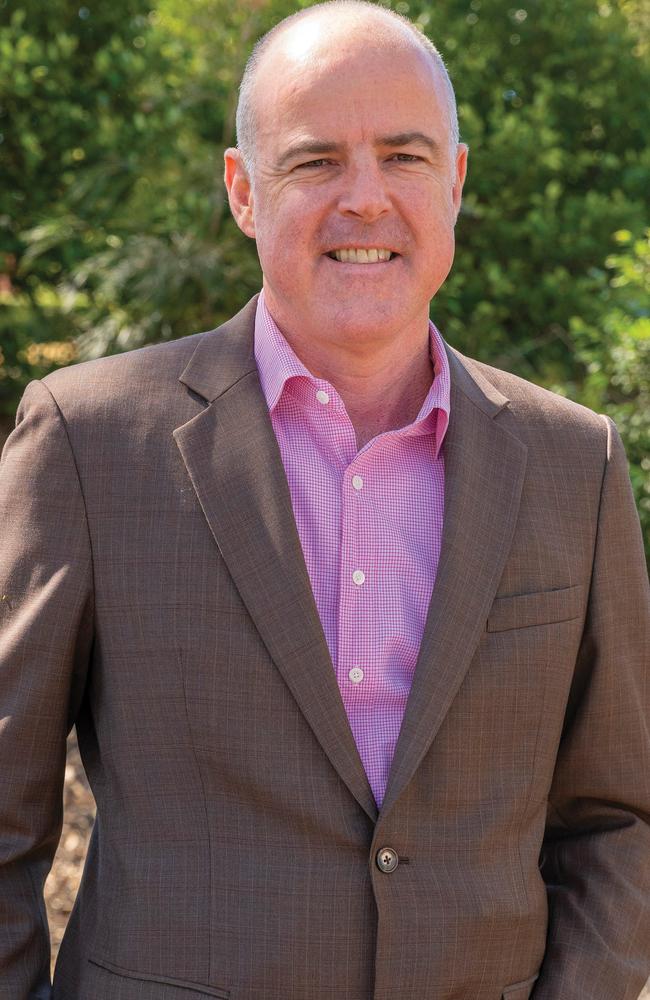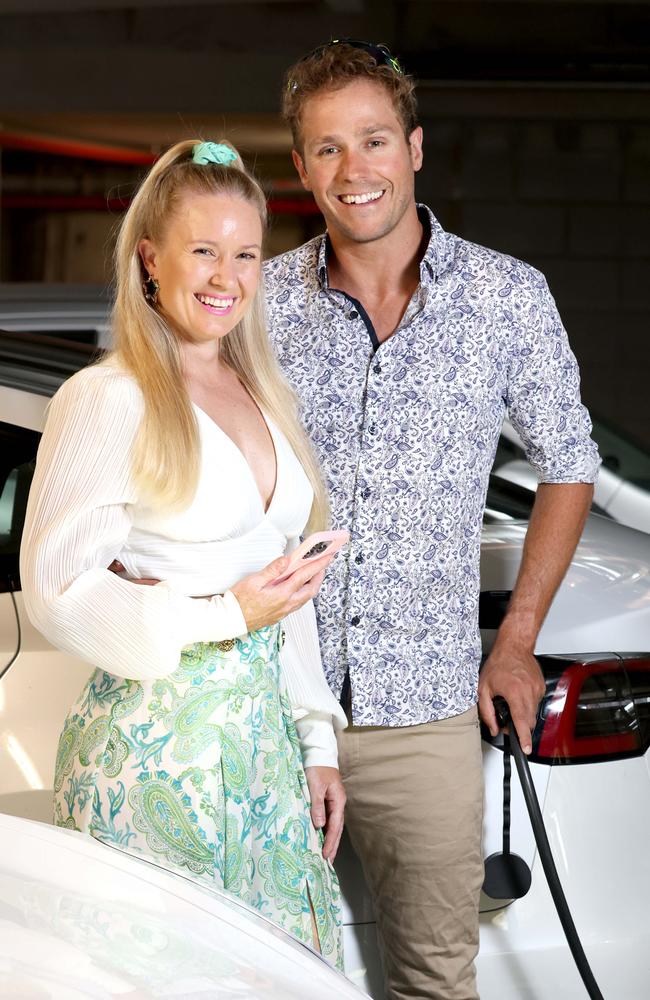800,000 electric vehicles tipped to be on Qld roads in next decade
More than 800,000 electric vehicles will hit Queensland roads over the next decade, meaning the state will need 1600 additional charging stations.
QLD News
Don't miss out on the headlines from QLD News. Followed categories will be added to My News.
An explosion in electric vehicles running on Queensland roads will require at least 1600 public charging stations to be built before the 2032 Olympic and Paralympic Games begin.
Experts expect about 800,000 electric vehicles to be on the road in the next decade – a massive increase from the 10,000 currently registered in Queensland – requiring a charging location every 70km along arterial roads and off-grid facilities in remote regions.
While upwards of 80 per cent of charging facilities are expected to be in people’s homes or workplaces, public charging stations will be needed to allow motorists to undertake longer trips.
Dr Kai Li Lim, the inaugural St Baker Fellow in Electromobility at University of Queensland’s Dow Centre for Sustainable Engineering Innovation, said a passenger-based electric vehicle mainly used for small trips was unlikely to use public charging facilities.
SCROLL TO BOTTOM TO COMPLETE THE FUTURE BRISBANE SURVEY

“It is only when an electric vehicle is travelling longer distances or away from their home region would they be more likely to use public chargers,” he said.
“With the assumption that traffic remains constant along arterial routes, we are looking at a total of about 1600 public dual-outlet DC chargers across the state across 84 additional sites.”
He said the Electric Vehicle Council’s latest recommendation involved having one charging location every 70km along arterial roads.
“However, the number of charging stations at each location would be largely dependent on local transport demands and local grid availability,” he said.
“For more remote regions, we would possibly need to set up a microgrid or off-grid facility with renewables.”
The Queensland government started phase three of the Queensland Electric Superhighway this year, with a goal of adding 24 charging stations in regional areas such as Longreach, Barcaldine and Stanthorpe.
Phases 1 and 2 involved building 31 charging stations from Coolangatta to Port Douglas, and Brisbane to Toowoomba.
Trevor St Baker, the chair of Evie Networks, Australia’s largest provider of charging stations, said that the cost of electric vehicles was coming down rapidly, with basic cars and delivery vans likely to be rolled out for under $40,000 by the end of the year.
He said that the average driver of an internal combustion engine vehicle spent about $2160 to travel 15,000km, while the driver of an electric car would spend only $600 to travel the same distance.

But he also said that most debate in Australia on electric cars focused on the environmental aspects with reduced carbon emissions.
“But this has very little to do with climate change or saving the planet. That’s a very good by-product, but the main driver of a bigger upkeep of electric cars is cost,” he said.
“After the initial purchase, there is about an 80 per cent reduction in transport costs for families and businesses.
“Cars can also do around 450,000km for 90 per cent chargeability, so they’re lasting a lot longer. They can still have a second life as a city car after that.”
PwC Australia’s integrated infrastructure partner Katie Nguyen said the key to adoption of electric vehicles was through addressing affordability and accessibility.

“Right now, electric vehicle uptake in Australia is low in terms of market share for total vehicle car sales, and we are lagging behind many other developed countries,” she said.
“While there’s no quick fix to get more people driving electric vehicles, a combination of ideas such as introducing fuel efficiency standards, financial incentives and government procurement of electric vehicles would all make a big difference to supporting a growing electric vehicle market.
“... there are a range of financial incentives available to improve the affordability and availability of electric vehicles, such as tax incentives to drive down costs, and grants to encourage local manufacturing and local assembly of electric vehicles and batteries.
“Government procurement of electric vehicles would increase imports and put more on the road, which would have the flow-on impact of growing the second-hand market as government-cars reach their renewal date. A better established second-hand market would create a different market and pricing offering, improving market affordability more broadly.”
RACQ chief David Carter said an important element of government support involved having an accelerated depreciation schedule for electric vehicles.
“The Tax Office would still get its revenue, but at a different time,” he said.
“This would also help create a second-hand market for electric vehicles, so that in around 10 years’ time, you had a substantial market of used electric vehicles which were three or four years old.
“When that second-hand market’s there, that’s when you’ll see a large take-up in electric vehicles.”
Future Brisbane, in partnership with corporate and community leaders, is exploring the mobility and connectivity legacy priorities ahead of the Brisbane 2032 Games.





